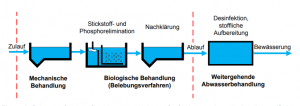
Figure 1: Stages of a WastewaterTreatmentPlant (Seis et al. 2016)
Introduction:
Water resources are coming under increasing pressure, leading to water scarcity and deteriorating water quality. In particular, climate change, unpredictable weather patterns and droughts are major contributors to the pressure on freshwater resources caused by urban development and agriculture. Therefore the need to restructure systems and trying recycling and reusing becomes more and more mandatory.
Context:
In terms of urban infrastructure, water treatment plants are of great importance as they guarantee a reliable and safe water supply in cities. In urban areas, the demand for drinking water is increasing due to the growing population and industry. Water treatment plants ensure that pollutants are removed from the water used in cities to ensure a safe and healthy water supply. In addition, water treatment plants can also play an important role in combating water pollution and overuse by recycling and reusing water. Therefore, it is important to invest in efficient and modern water treatment technologies to ensure a reliable and safe water supply for growing urban communities.
In this case we have a context of school building, apartment building and bridge. The buildings have a water consumption that is connected to the treatment plant, where it is treated to be used for agricultural quarrying. From the point of view of sustainability, it is particularly important to promote recycling and reuse processes and not waste resources.